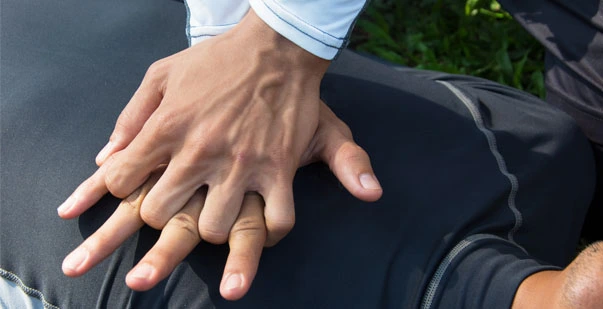
Last Updated On: septiembre 24, 2024
Have you ever seen someone collapse on the street or in a movie? Maybe they have suffered a stroke or a heart attack. Maybe they were choking or drowning. Maybe they were in a car accident or a fire. Whatever the cause, their heart stopped beating and their brain stopped getting oxygen. This is called cardiac arrest, and it can happen to anyone at any time. It can be deadly if not treated quickly on time.
You can do CPR to help save someone’s life in this situation. The American CPR Care Association provides top-quality online courses for Adult, Child, and Infant CPR certification, which are recognized both nationally and internationally. These courses are designed to meet the needs of various settings, including schools, communities, and workplaces. Rest assured that you will receive excellent training and certification that adheres to high standards when you choose the American CPR Care Association.
So, how does CPR restore blood flow and oxygen? CPR is a simple technique that anyone can learn and use to keep blood and oxygen flowing to the heart and brain until emergency medical services help arrive. It is a precise combination of firm chest compressions and rescue breaths.
Perform Chest compressions to push hard and fast on the center of the person’s chest, about 100 to 120 times per minute, with a chest compression depth of 2 inches. It helps squeeze the heart and pump blood to the rest of the body. This helps squeeze the heart and pump blood to the rest of the body.
Rescue breaths are when you tilt the person’s head back, pinch their nose, and blow into their mouth once every 6 seconds. This helps fill their lungs with air and deliver oxygen to their blood.
By doing chest compressions and rescue breaths, you are acting as an artificial heart and lungs for the person until their organs can start working again or until an automated external defibrillator (AED) or a paramedic can take over. An AED is a device that can shock the heart back into a normal rhythm if it is irregular or stopped.
When someone suffers cardiac arrest, their heart stops beating or beats too fast or too slow to pump blood effectively. This can be caused by many factors, such as a heart attack, an electrical shock, a drug overdose, a severe allergic reaction, or trauma. When this happens, the blood flow to the brain and other vital organs is interrupted, and they start to die within minutes.
Performing high-quality CPR helps keep the blood circulating in the body by manually squeezing the heart and forcing it to pump blood. It prevents further damage to the heart muscle and other organs and gives them a chance to recover after successful resuscitation.
When someone suffers cardiac arrest, their brain stops getting oxygen and glucose from the blood. This causes brain cells to die rapidly, especially in areas that are responsible for vital functions such as breathing and heartbeat. If this continues for more than 4 minutes without CPR or other intervention, irreversible brain damage or death can occur.
CPR helps keep oxygen and glucose flowing to the brain by manually filling the lungs with air and forcing it into the blood. This prevents further damage to the brain cells and preserves their function if they can be revived.
CPR is important because it can save someone’s life in case of cardiac arrest. CPR can make a big difference in survival rates if performed correctly and promptly by bystanders who witness a cardiac arrest.
According to an article in NLM, cardiac arrest is a leading cause of death worldwide, affecting more than at least 300,000 people in the US alone every year. Only about 10% of them survive without immediate CPR or defibrillation. Studies have shown that bystander CPR can increase survival rates by 2 to 3 times compared to no CPR at all. However, only about 40% of cardiac arrest victims receive bystander CPR in the US.
CPR is also important because it can improve the quality of life for survivors of cardiac arrest. CPR can reduce the risk of permanent brain damage or disability by maintaining blood flow and oxygen delivery to the brain during cardiac arrest. CPR can also reduce the risk of complications such as organ failure or infection by preserving organ function during cardiac arrest.
Conclusion
Every second is of value when someone suffers from a cardiac arrest. By knowing how to do CPR, you could be their hero. Enroll with the American CPR Care Association today and help save a life! Talk to us at 1-888-808-9109.